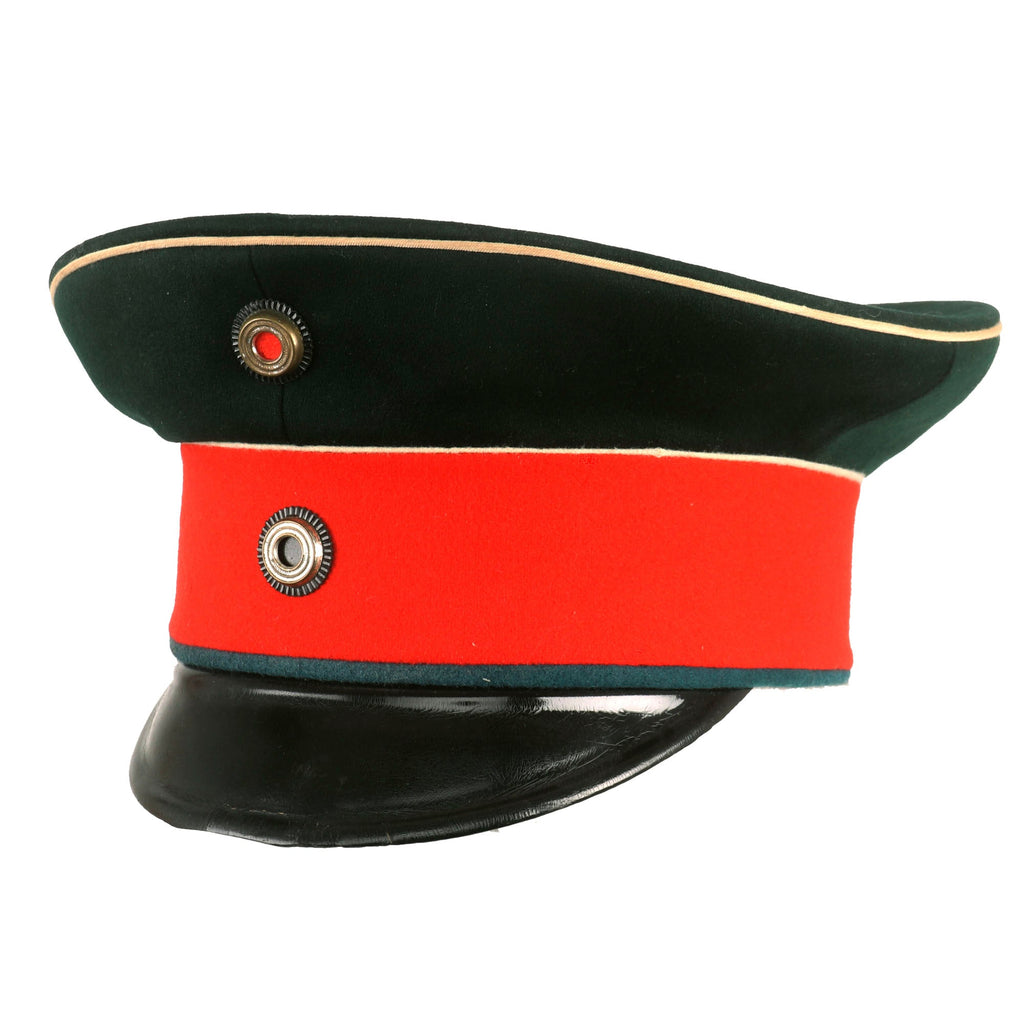Item Description
Original Item: Only One Available. This is a very nice example of an Imperial German Prussian EM/NCO Visor Cap (Schirmmütze), in the early 20th Century Darg Green. The later M1907/1910 version would move to the Feldgrau (Fieldgray) that was seen mostly during the war. The cap constructed of dark green wool, which was the standard color for all states except for Bavaria, which used their own blue color. It has Ponceaurot (poppy red) wool band and age white piping, which indicates the 11th Hussar Regiment (2nd Westphalian Regiment).
The front of the cap bears a Black, White and Red Reichskokarde (Imperial Cockade) on the front of the crown, with a Black and White Cockade on the cap band for the Kingdom of Prussia. The interior is lined with tan cloth, with a light brown oil cloth sweatband. Size is approximately a US 7 (56cm).
Condition is very good, with colors well retained, and just a few areas of moth damage but other than that this cap is one of the best we have seen.
Ready to display!
The 11th Hussar Regiment, initially called the 2nd Westphalian Regiment, was a notable cavalry unit of the Royal Prussian Army and the German Imperial Army.
It was established in Düsseldorf in December 1807 and originally bore the name of 2nd Royal Westphalian Hussar Regiment. It was a continuation of an earlier unit, the Chevau-légers Uhlan Regiment of the Duchy of Berg formed by Joachim Murat earlier during the Napoleonic Wars.
In 1906 the regiment gained the nickname of "Dancing Hussars of Krefeld" after Emperor Wilhelm II personally ordered the regiment to relocate from Düsseldorf to Krebs following that city's aristocracy's complaints that there were not enough bachelors to dance at the balls. Thereupon the Emperor promised to send appropriate dancers. What was at first thought of as a joke, was later the same day confirmed by General Moritz von Bissing, the commanding officer of the 7th Army Corps.
The regiment took part in World War I as part of the 9th Cavalry Division. Initially at the Western Front, in late 1914 it was moved to the Eastern Front where it remained for the rest of the conflict (mostly in the region of Polesie). Dismounted in 1916, the regiment was disbanded along with the rest of the division in early March 1918.
- This product is available for international shipping.
- Not eligible for payment with Paypal or Amazon













